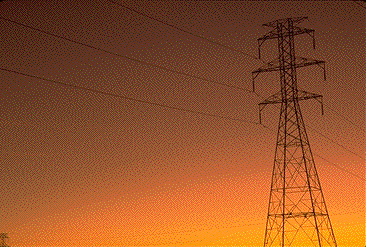



These transmission lines carry electrical power -- which was initially provided by a waterfall, coal, oil, natural gas, or nuclear power -- for many, many kilometers. The electric current carried by these transmission lines -- and your local power company -- is alternating current (AC) electricity. AC electricity flows first in one direction and then in the opposite. This is in contrast to the direct current (DC) electricity which a battery provides to light your flashlight.
Because of the intimate connection between electricity and magnetism, the voltage of AC electricity can be changed very easily. That is the whole purpose of electric transformers. The voltage of electricity may be increased dramatically so the power can be transmitted over great distances with minimal losses.
Transformers closer to home reduce the voltage for transmission throughout your city. Local transformers reduce this voltage further to the familiar 120 volts of common household electricity. Even within your house, you may use AC adaptors, which are really small transformers, to further reduce the voltage to 12 volts or 9 volts or 6 volts to power some of your electronic equipment there. All this is possible because the electricity we use in these situations is AC electricity.
If high voltage is more efficient, why do we reduce the voltage at all? Why do we not retain the high voltage and use it throughout the city and throughout our homes?
(c) Doug Davis, 2002; all rights reserved
Return to Ch 22 Home Page (ToC)